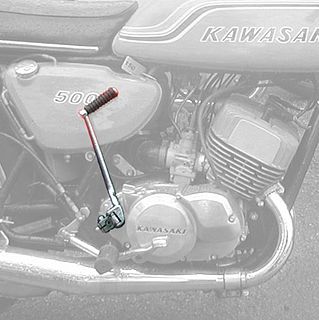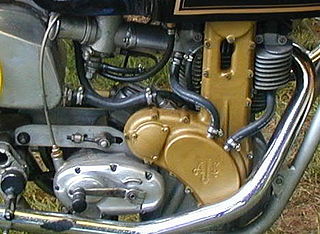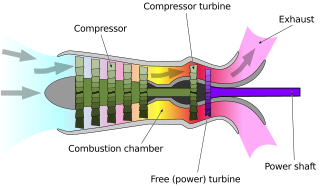 W
WA motorcycle engine is an engine that powers a motorcycle. Motorcycle engines are typically two-stroke or four-stroke internal combustion engines, but other engine types, such as Wankels and electric motors, have been used.
 W
WThe BMW M2B15 was BMW's first flat-twin engine. Manufactured from 1920 to 1923, the M2B15 was intended to be a portable industrial engine, but it was used by several German motorcycle manufacturers to power their motorcycles.
 W
WA two-stroke engine is a type of internal combustion engine that completes a power cycle with two strokes of the piston during one power cycle, this power cycle being completed in one revolution of the crankshaft. A four-stroke engine requires four strokes of the piston to complete a power cycle during two crankshaft revolutions. In a two-stroke engine, the end of the combustion stroke and the beginning of the compression stroke happen simultaneously, with the intake and exhaust functions occurring at the same time.
 W
WA desmodromic valve is a reciprocating engine poppet valve that is positively closed by a cam and leverage system, rather than by a more conventional spring.
 W
WA diesel motorcycle is a motorcycle with a diesel engine.
 W
WA flat-twin engine is a two-cylinder internal combustion engine with the cylinders on opposite sides of the crankshaft. The most common type of flat-twin engine is the boxer-twin engine, where both cylinders move inwards and outwards at the same time.
 W
WA flathead engine, also known as a sidevalve engine or valve-in-block engine is an internal combustion engine with its poppet valves contained within the engine block, instead of in the cylinder head, as in an overhead valve engine.
 W
WFlathead motorcycles are a type of bike that was a standard for pre-war motorcycles, in particular US V-twins such as Harley-Davidson and Indian, some British singles, BMW flat twins and Russian copies thereof.
 W
WA four-stroke power valve is a device fitted to four-stroke engines that constantly adjusts the internal diameter of the exhaust system to better suit the speed of the engine. At low engine speeds, the wave pressure within the pipe network is low. A full oscillation of the Helmholtz resonance occurs before the exhaust valve is closed, and to increase low-speed torque, large-amplitude exhaust pressure waves are artificially induced. This is done by partial closing of an internal butterfly valve within the exhaust where the primary pipes from the cylinders join. The alteration of the pressure at this point controls the behavior of reflected waves at this sudden increase in area discontinuity. Closing the valve increases the local pressure, inducing the formation of larger-amplitude negative reflected expansion waves. A servo motor controlled by the ECU opens and shuts the valve. The valve goes from being almost fully closed at idle speed, through to fully open at higher engine speeds. This ensures low to mid-range performance, more linear power output and reduced exhaust noise levels while the valve is in its reduced opening position.
 W
WA hood scoop or bonnet scoop, sometimes called bonnet airdam and air dam, is an upraised component on the hood of a motor vehicle that either allows a flow of air to directly enter the engine compartment, or appears to do so. It has only one opening and is closed on all other sides. Its main function is to allow a direct flow of air to the engine, hence the need for it to be upraised so as to effectively channel air to the engine compartment. It may be closed, and thus purely decorative, or serve to enhance performance in several possible ways.
 W
WThe Indian Scout FTR750 is a competition-only motorcycle engine made by Indian Motocycle Manufacturing Company for flat track racing. It is a fuel-injected, liquid-cooled, four-valve-per-cylinder V-twin. A single-pin crankshaft riding on plain bearings carries side-by-side steel connecting rods. It is the first all-new flat track racing motor from Indian Motorcycle in decades.
 W
WThe intake/inlet over exhaust, or "IOE" engine, known in the US as F-head, is a four-stroke internal combustion engine whose valvetrain comprises OHV inlet valves within the cylinder head and exhaust side-valves within the engine block.
 W
WKick start is a method of starting an internal combustion engine by pushing a ratcheting lever with one's foot. Kick start mechanisms were almost universally a part of motorcycle engines before the mid-1970s, and were phased out of production over the next twenty years or so as electric starters became standard equipment. There are still some motorcycles produced that have both kick and electric starters.
 W
WA V-twin engine, also called a V2 engine, is a two-cylinder piston engine where the cylinders share a common crankshaft and are arranged in a V configuration.
 W
WAn overhead valve (OHV) engine is a piston engine whose valves are located in the cylinder head above the combustion chamber. This contrasts with earlier flathead engines, where the valves were located below the combustion chamber in the engine block.
 W
WPre-unit construction, also called separate construction, is a motorcycle engine architecture where the engine and gearbox are separate components with their own oil reservoirs, linked by a driving chain within a primary chaincase. Mounting plates are usually attached to the frame allowing for chain adjustment by gearbox fore-and-aft movement and via screw adjusters and elongated mounting holes. Even though Singer offered an integrated engine and gearbox in a single casing in 1911, it was not until the 1950s that technical advances meant it was possible to reliably construct engines with integral gearboxes in a single unit, known as unit construction.
 W
WPush starting, also known as bump starting, clutch starting, popping the clutch or crash starting, is a method of starting a motor vehicle with an internal combustion engine and with a manual transmission and with a mechanical fuel pump and a mechanically driven generator or alternator. By pushing or letting the vehicle roll downhill then engaging the clutch at the appropriate speed the engine will turn over and start. The technique is most commonly employed when other starting methods are unavailable.
 W
WA ram-air intake is any intake design which uses the dynamic air pressure created by vehicle motion to increase the static air pressure inside of the intake manifold on an internal combustion engine, thus allowing a greater massflow through the engine and hence increasing engine power.
 W
WReed valves are a type of check valve which restrict the flow of fluids to a single direction, opening and closing under changing pressure on each face. Modern versions often consist of flexible metal or composite materials.
 W
WThe RevoPower is a motorized wheel concept, the idea being the conversion of a pedal-powered bicycle into a motorcycle. It was invented by Denver, Colorado based RevoPower Inc.
 W
WThe rotary engine is an early type of internal combustion engine, usually designed with an odd number of cylinders per row in a radial configuration, in which the crankshaft remained stationary in operation, with the entire crankcase and its attached cylinders rotating around it as a unit. Its main application was in aviation, although it also saw use before its primary aviation role, in a few early motorcycles and automobiles.
 W
WA single-cylinder engine, sometimes called a thumper, is a piston engine with one cylinder. They are often used for motorcycles, motor scooters, go-karts, all-terrain vehicles, radio-controlled [2974] vehicles, portable tools and garden machinery.
 W
WThe Triumph Triples are a family of modern DOHC inline three-cylinder motorcycle engines made from 1990 onwards by the Triumph Motorcycle Company at their Hinckley, Leicestershire factory. The inspiration for the later triples was the pushrod Triumph Trident, produced from 1968 to 1974 at the Triumph factory at Meriden Works.
 W
WA turboshaft engine is a form of gas turbine that is optimized to produce shaftpower rather than jet thrust. In concept, turboshaft engines are very similar to turbojets, with additional turbine expansion to extract heat energy from the exhaust and convert it into output shaft power. They are even more similar to turboprops, with only minor differences, and a single engine is often sold in both forms.
 W
WA two-stroke engine is a type of internal combustion engine that completes a power cycle with two strokes of the piston during one power cycle, this power cycle being completed in one revolution of the crankshaft. A four-stroke engine requires four strokes of the piston to complete a power cycle during two crankshaft revolutions. In a two-stroke engine, the end of the combustion stroke and the beginning of the compression stroke happen simultaneously, with the intake and exhaust functions occurring at the same time.
 W
WUnit construction is the design of larger motorcycles where the engine and gearbox components share a single casing. This sometimes includes the design of automobile engines and was often loosely applied to motorcycles with rather different internal layouts such as the flat twin BMW models.
 W
WIn internal combustion engines, variable valve timing (VVT) is the process of altering the timing of a valve lift event, and is often used to improve performance, fuel economy or emissions. It is increasingly being used in combination with variable valve lift systems. There are many ways in which this can be achieved, ranging from mechanical devices to electro-hydraulic and camless systems. Increasingly strict emissions regulations are causing many automotive manufacturers to use VVT systems.
 W
WVTEC is a system developed by Honda to improve the volumetric efficiency of a four-stroke internal combustion engine, resulting in higher performance at high RPM, and lower fuel consumption at low RPM. The VTEC system uses two camshaft profiles and hydraulically selects between profiles. It was invented by Honda engineer Ikuo Kajitani. It is distinctly different from standard VVT systems which change only the valve timings and do not change the camshaft profile or valve lift in any way.
 W
WThe Wankel engine is a type of internal combustion engine using an eccentric rotary design to convert pressure into rotating motion.